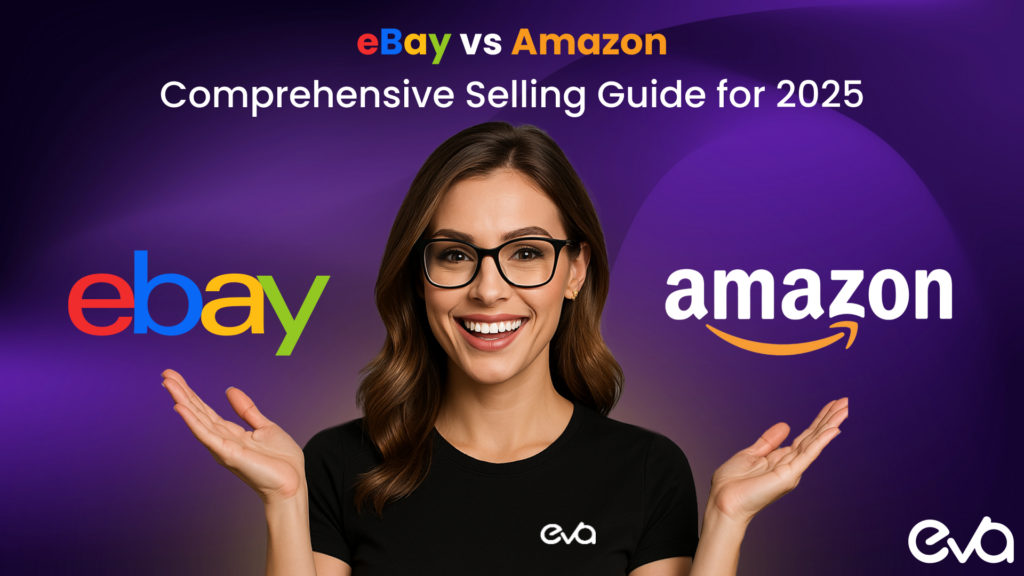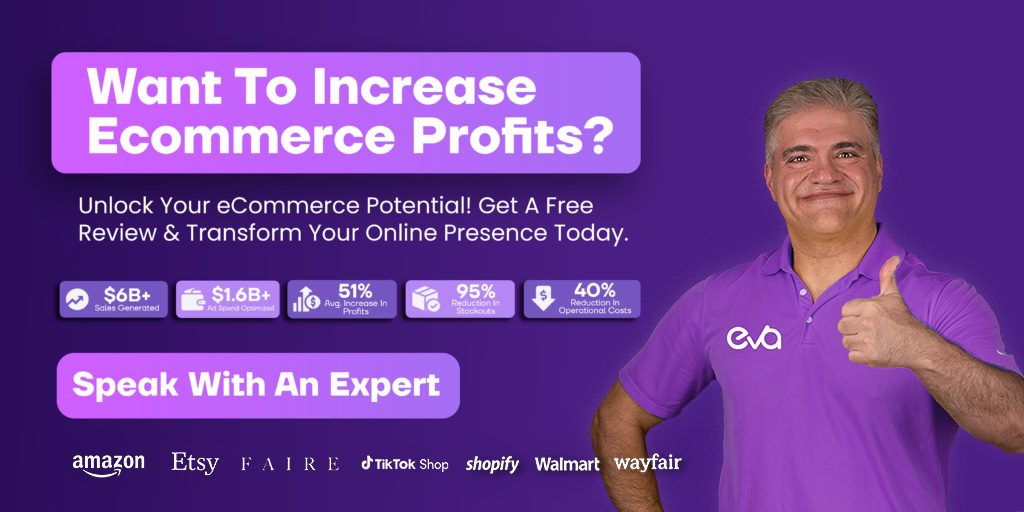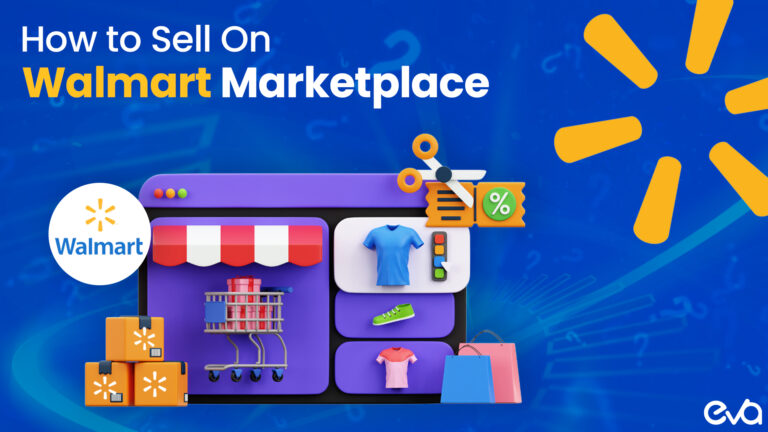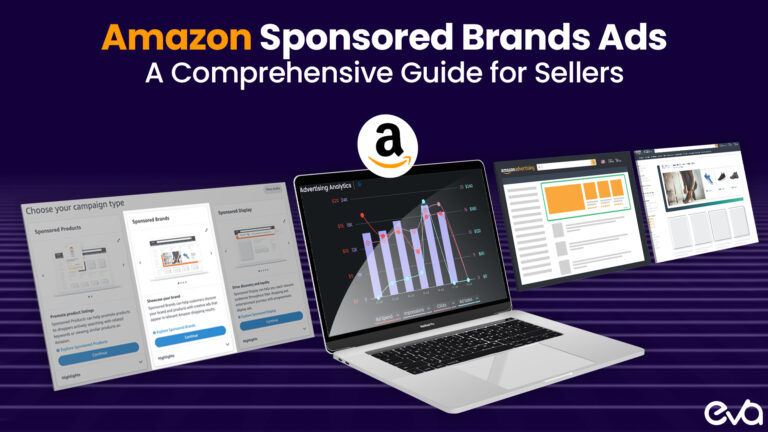eBay vs Amazon in 2025: Which marketplace aligns with your business model? Discover the strategic advantages of each platform
Even though it’s easy for the shadow of Amazon to eclipse other marketplaces, choosing between selling on eBay vs Amazon remains one of the most crucial decisions for e-commerce entrepreneurs in 2025.
With both platforms continuing to dominate the online selling landscape, many merchants struggle to determine which marketplace better aligns with their business goals. While both eBay vs Amazon offer significant opportunities, they serve different customer bases, support different business models, and meet different seller needs.
Let’s dive into a comprehensive comparison of selling on eBay vs Amazon in 2025 to help you determine the best fit for your business strategy.
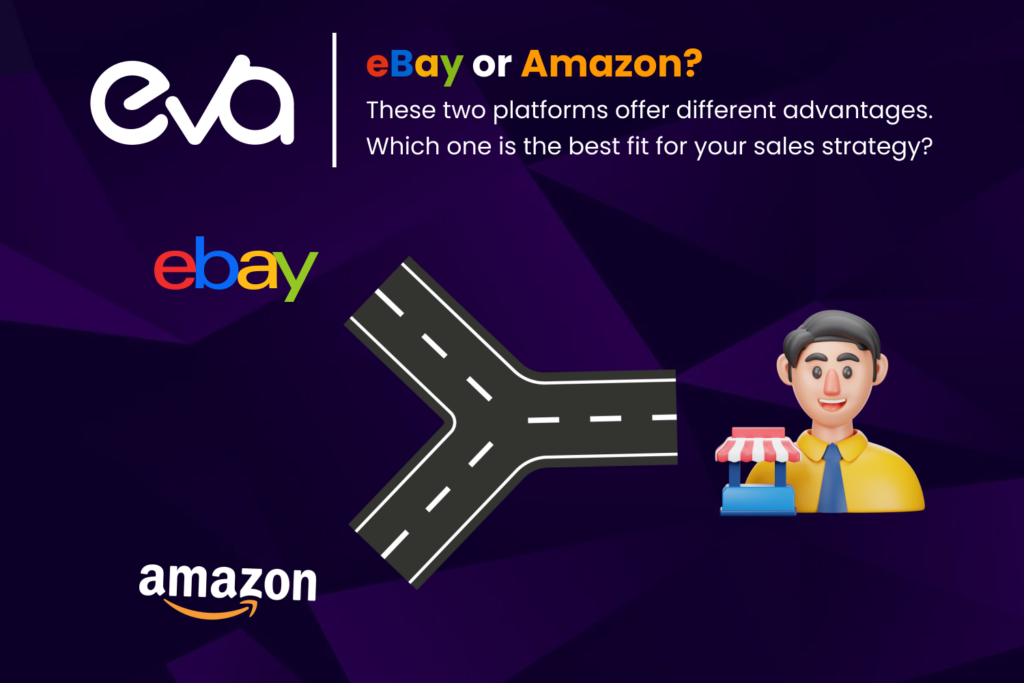
Table of Contents
- Audience and Market Reach: eBay vs Amazon
- Business Models and Selling Approaches
- Amazon Selling Fees vs eBay: Understanding Cost Implications
- Fulfillment and Logistics Management
- Competition and Product Differentiation
- Seller Experience and Platform Policies
- Making Your Decision: eBay vs Amazon?
- The Hybrid Approach: Selling on eBay vs Amazon Simultaneously
- Supercharge Your Success on eBay vs Amazon with Eva
Audience and Market Reach: eBay vs Amazon
The first significant differentiator between these platforms is their audience profile and shopping behaviors.
Amazon: The eCommerce Giant
Amazon continues to dominate with over 213 million unique monthly visitors in the U.S. alone. Its audience primarily consists of:
- Generation X and millennial shoppers
- Consumers with higher disposable income
- Prime members (now exceeding 200 million globally) who value convenience and fast shipping
Amazon shoppers typically prioritize convenience, reliability, and speed. They’re looking for new, branded products with competitive pricing and the assurance of fast delivery. This makes Amazon ideal for sellers offering mainstream products to a broad audience.

eBay: The Specialized Marketplace
When comparing eBay vs Amazon, eBay has successfully carved its niche by appealing to:
- Collectors and enthusiasts
- Bargain hunters
- Shoppers seeking unique, vintage, or hard-to-find items
- A slightly younger demographic (18-24) compared to Amazon
- Male buyers searching for collectibles, electronics, and specialty items
eBay excels when it comes to unique offerings, used goods, and specialty items. For sellers in niche markets, eBay often provides a more targeted and engaged audience than Amazon’s general marketplace.
Business Models and Selling Approaches
The fundamental selling approach differs significantly between selling on eBay vs Amazon, affecting how you’ll manage your business.
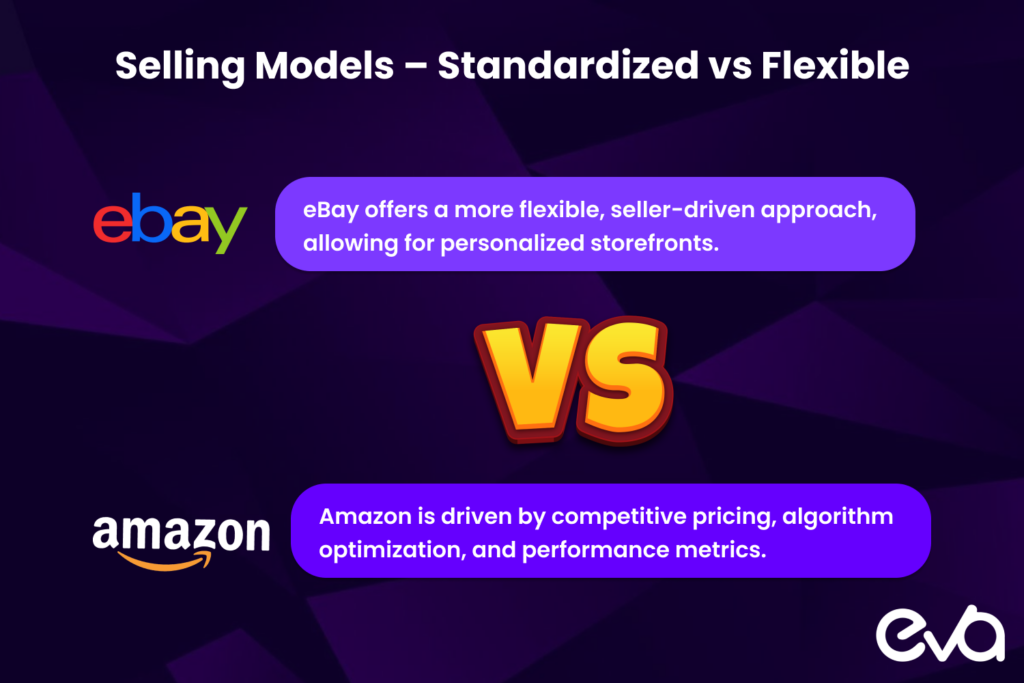
Amazon’s Standardized Model
Amazon operates primarily through a fixed-price model with highly standardized listings. Key characteristics include:
- Product-centric (rather than seller-centric) approach
- Limited brand identity for sellers
- Critical importance of winning the Buy Box
- Streamlined, algorithm-driven selling process
- Option for Fulfillment by Amazon (FBA)
Success on Amazon hinges on competitive pricing, maintaining excellent seller metrics, and optimizing for Amazon’s algorithm. This standardization makes Amazon well-suited for scaling businesses focused on volume and efficiency.
eBay’s Flexible Approach
In the eBay vs Amazon comparison, eBay offers greater flexibility with:
- Both auction-style and fixed-price listing options
- More customizable listings with detailed descriptions
- Greater seller identity and branding opportunities
- Direct communication with buyers
- Lower algorithmic dependence
eBay allows sellers to build their brand through personalized listings, custom descriptions, and direct buyer engagement. This flexibility is particularly valuable for businesses selling unique or collectible items where item-specific details matter.
Amazon Selling Fees vs eBay: Understanding Cost Implications
When comparing Amazon selling fees vs eBay, understanding the cost implications is crucial for maintaining healthy profit margins.

Amazon’s Fee Structure
Amazon typically charges:
- Referral fees (averaging 15% of sale price)
- FBA fees (if using Amazon’s fulfillment services)
- Storage fees for inventory
- Subscription fees for Professional sellers ($39.99/month)
- Optional advertising costs
While Amazon selling fees vs eBay are generally higher, they include services that streamline operations, like customer service and fulfillment logistics through FBA.
eBay’s Cost Model

When evaluating Amazon selling fees vs eBay, eBay’s structure includes:
- Final value fees (around 10-12% for most categories)
- Payment processing fees
- Optional listing upgrade fees
- No standard monthly subscription requirement
eBay’s lower fee structure can benefit sellers with thin margins or those selling higher-priced items where percentage-based fees make a significant difference.
For many sellers, the Amazon selling fees vs eBay comparison reveals potential for higher profitability on eBay, particularly for higher-ticket items.
Fulfillment and Logistics Management
How you handle order fulfillment dramatically impacts customer satisfaction and operational efficiency when selling on eBay vs Amazon.
Amazon’s Fulfillment Solutions
Amazon’s primary advantage is its robust FBA program which:
- Handles storage, packaging, and shipping
- Manages customer service and returns
- Makes products eligible for Prime shipping
- Increases product visibility in search results
- Enables multi-channel fulfillment
FBA allows sellers to focus on product sourcing and marketing rather than day-to-day logistics, though it does come with additional costs and inventory management requirements.
eBay’s Seller-Managed Approach
When selling on eBay vs Amazon, eBay sellers typically:
- Manage their own inventory storage
- Handle packaging and shipping themselves
- Respond directly to customer inquiries
- Process returns individually
- Have the option to use eBay’s Global Shipping Program for international orders
This hands-on approach gives sellers complete control over the customer experience but requires more time and operational infrastructure.
Competition and Product Differentiation
The competitive landscape varies significantly between platforms, affecting your ability to stand out.
Amazon’s Competitive Environment
Amazon’s marketplace features:
- Intense competition in most categories
- Algorithm-driven visibility
- Emphasis on new, branded products
- Strict compliance requirements
- Limited differentiation opportunities beyond price and reviews
Success on Amazon often requires sophisticated strategies for keyword optimization, pricing, and advertising to stand out in a crowded marketplace.
eBay’s Specialized Marketplace
In the eBay vs Amazon competition comparison, eBay typically offers:
- Less direct competition in niche categories
- Better opportunities for unique or one-of-a-kind items
- More emphasis on product photos and descriptions
- Greater tolerance for used or refurbished goods
- Differentiation through seller reputation and listing quality
For specialized businesses, eBay often provides a clearer path to visibility without the intensive competitive pressure found on Amazon.
Seller Experience and Platform Policies
The day-to-day experience of managing your business varies considerably when comparing selling on eBay vs Amazon.
Amazon Seller Experience
Selling on Amazon means:
- Streamlined, automated processes
- Strict performance metrics
- Customer-centric policies that sometimes disadvantage sellers
- Risk of account suspension for policy violations
- Advanced analytics and advertising tools
Amazon’s approach prioritizes the customer experience, sometimes at the expense of seller flexibility and security.
eBay Seller Experience
When evaluating selling on eBay vs Amazon, eBay generally offers:
- More seller-friendly policies
- Greater listing control and customization
- Direct buyer-seller communication
- Less risk of sudden account suspension
- More flexibility in conflict resolution
For many small businesses, eBay’s more balanced approach to seller relations provides a more sustainable and less stressful selling environment.
Making Your Decision: eBay vs Amazon?
The best platform for your business depends on your specific circumstances:
Choose Amazon if:
- You sell new, branded products with mass-market appeal
- You want to leverage FBA for hands-off fulfillment
- You’re focused on scaling a high-volume business
- You have the margins to absorb higher fees
- You can maintain competitive pricing
- You have systems to ensure compliance with Amazon’s strict policies
Choose eBay if:
- You sell unique, collectible, or used items
- You want more control over your branding and customer relationships
- You prefer lower fees and more flexible policies
- You’re comfortable managing your own fulfillment
- You sell in specialized niche categories
- You value building direct relationships with buyers
The Hybrid Approach: Selling on eBay vs Amazon Simultaneously
Many successful sellers leverage both platforms simultaneously to:
- Diversify revenue streams
- Reach different customer segments
- Test new products in different environments
- Balance the strengths and weaknesses of each marketplace
By understanding the nuances of each platform, you can develop strategies that maximize your reach while playing to the strengths of your specific business model.
Supercharge Your Success on eBay vs Amazon with Eva
While choosing between selling on eBay vs Amazon is crucial, optimizing your operations across marketplaces is where true e-commerce success happens. Eva’s comprehensive platform helps sellers maximize profitability on both Amazon and eBay through AI-powered optimization and expert guidance.
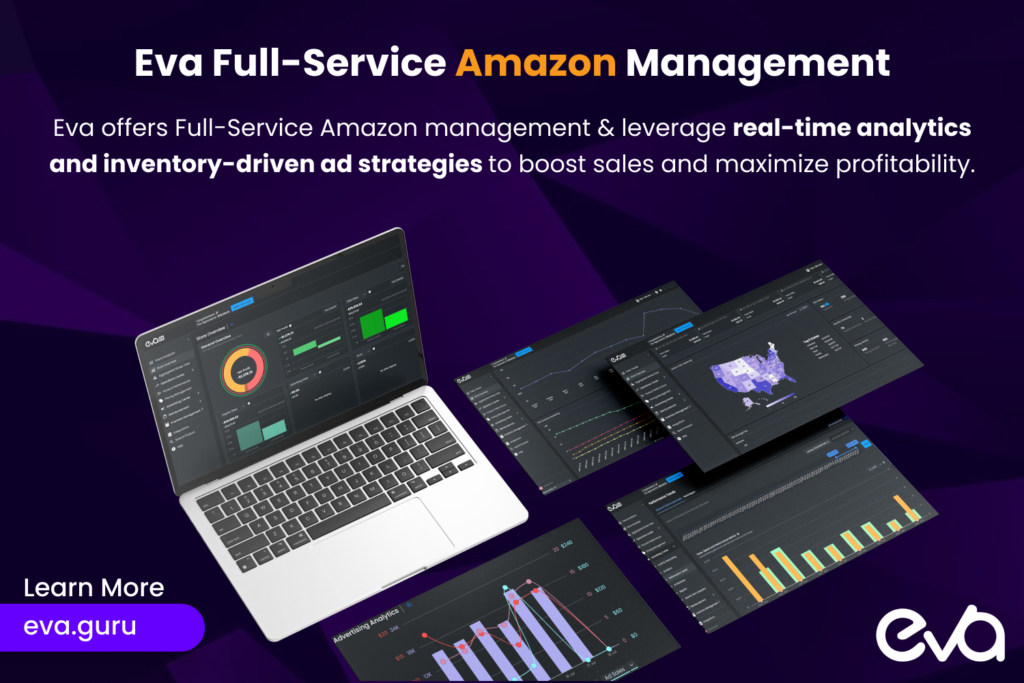
How Eva Transforms Your Marketplace Business:
For Amazon Sellers:
- Profit Analytics: Gain visibility into true profitability with our comprehensive analytics that track all Amazon fees, advertising costs, and operational expenses
- Inventory Optimization: Prevent stockouts and excessive storage fees with AI-powered inventory forecasting
- Advertising Management: Maximize ROAS with automated bid adjustments and campaign optimization
- FBA Reimbursements: Recover lost revenue from inventory discrepancies, overcharges, and other Amazon errors
For eBay Sellers:
- Competitive Pricing Tools: Stay competitive with dynamic pricing adjustments based on market conditions
- Cross-Platform Integration: Synchronize inventory across Amazon, Walmart, eBay, and other marketplaces
- Performance Analytics: Track seller metrics and optimize listings to improve visibility
- Fulfillment Optimization: Streamline your shipping process with integrated logistics solutions
When weighing Amazon selling fees vs eBay costs, Eva’s platform helps you maximize profitability regardless of which platform you choose. Our solutions have helped sellers achieve an average 51% profit increase while reducing operational costs by 40%.
Whether you choose selling on eBay vs. Amazon or both, our technology and marketplace expertise help you confidently navigate the complexities of e-commerce.
Ready to elevate your marketplace performance? Schedule a free consultation with Eva’s marketplace experts to discover untapped opportunities for growth and profitability on eBay vs Amazon.

